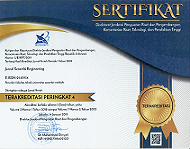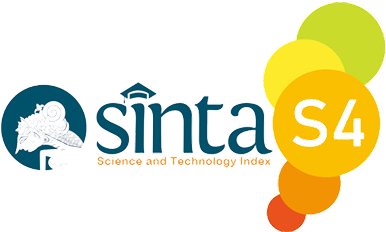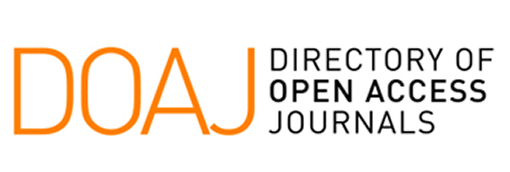Analisis Peran Etnofarmasi Sambai Oen Peugaga dalam Tradisi Ramadhan: Refleksi Kearifan Lokal Aceh
Keywords:
ethnopharmacology, sambai oen peugaga, medicinal plants, local wisdom, functional foodAbstract
Sambai oen peugaga is a traditional Acehnese dish closely associated with the month of Ramadan and contains more than 40 types of local medicinal plants. This dish serves not only as a complementary culinary delight but also holds significant ethnopharmacological value. This study aims to analyze the role of sambai oen peugaga in supporting health during fasting as well as to explore the underlying local wisdom values. The method employed is a qualitative descriptive approach through a literature review of various scientific and cultural sources. The findings indicate that most plants used in sambai oen peugaga contain active compounds such as flavonoids, saponins, curcuminoids, and essential oils, which exhibit anti-inflammatory, antioxidant, immunostimulant, and antimicrobial effects. The combination of these compounds supports digestive health, immune function, and reduces oxidative stress during fasting. From a socio-cultural perspective, sambai oen peugaga functions as a medium for transmitting values, strengthening family cohesion, and reflecting a harmonious relationship between humans and nature. These findings underscore the importance of preserving traditional plant-based culinary heritage as part of community health systems and open opportunities for developing locally competitive functional food products.
References
[1] Saputra, R. (2023). Kuliner Tradisional Aceh: Warisan Leluhur Penuh Khasiat. Banda Aceh: Penerbit Syah Kuala Press.
[2] AcehEkspres. (2024, Maret 12). Sambai Oen Peugaga: Kuliner Ramadhan Sarat Khasiat dari Tanah Rencong. Diakses dari https://www.acehekspres.com/sambai-oen-peugaga-kuliner-ramadhan
[3] Nukilan.id. (2024, April 5). Mengenal Sambai Oen Peugaga, Hidangan Khas Aceh Saat Ramadhan. Diakses dari https://www.nukilan.id/sambai-oen-peugaga-khas-aceh
[4] Pikiran Merdeka. (2016, Juni 17). Sambai Oen Peugaga: Menu Sehat Ramadhan Khas Aceh. Diakses dari https://www.pikiranmerdeka.co/news/sambai-oen-peugaga-menu-sehat-ramadhan/
[5] RMOL Aceh. (2023, April 10). Tradisi Sambai Oen Peugaga di Bulan Ramadhan, Antara Cita Rasa dan Khasiat Kesehatan. Diakses dari https://www.rmolaceh.id/tradisi-sambai-oen-peugaga-ramadhan
[6] Sodik, A., Yusnita, R., & Hidayati, L. (2024). Potensi Pegagan (Centella asiatica) sebagai Tanaman Obat dalam Perspektif Etnofarmasi. Jakarta: Pustaka Kesehatan Nusantara.
[7] Muhlida, N., & Kurniawati, D. (2021). Aktivitas farmakologis senyawa aktif pegagan (Centella asiatica): Tinjauan literatur. Jurnal Ilmu Kefarmasian Indonesia, 19(2), 123–130. https://doi.org/10.32583/jifi.v19i2.789
[8] Rhomah, N., & Fitriyah, N. (2021). Review: Pegagan sebagai imunomodulator dan neuroprotektor alami. Jurnal Penelitian dan Pengembangan Kesehatan, 9(1), 45–52. https://doi.org/10.22435/jppk.v9i1.4452
[9] Kemendikbud. (2024). Sambai Oen Peugaga: Warisan Budaya Takbenda Aceh. Jakarta: Direktorat Jenderal Kebudayaan, Kementerian Pendidikan, Kebudayaan, Riset, dan Teknologi. Diakses dari https://kebudayaan.kemdikbud.go.id/warisanbudaya/sambai-oen-peugaga
[10] Kabar Bireuen. (2024, April 3). Makna Filosofis di Balik Sambai Oen Peugaga, Kuliner Tradisional Aceh. Diakses dari https://www.kabarbireuen.com/sambai-oen-peugaga-makna-filosofis
[11] Handayasari, M., Zainuddin, H., & Nurhasanah, E. (2022). Kearifan lokal dalam tradisi kuliner masyarakat Aceh: Kajian budaya dan sosial. Jurnal Antropologi Indonesia, 43(1), 75–89. https://doi.org/10.7454/jai.v43i1.2212
[12] Waspada Aceh. (2025, Maret 28). Sambai Oen Peugaga, Hidangan Ramadhan Pemersatu Keluarga Aceh. Diakses dari https://waspadaaceh.com/sambai-oen-peugaga-hidangan-pemersatu-keluarga
[13] Budaya Aceh. (2024, Februari 21). Ancaman Kepunahan Kuliner Tradisional Aceh di Tengah Modernisasi. Diakses dari https://www.budayaaceh.id/ancaman-kepunahan-kuliner-tradisional
[14] Antara News. (2023, Desember 5). Urbanisasi dan Perubahan Gaya Hidup Ancam Tradisi Kuliner Lokal. Diakses dari https://www.antaranews.com/urbanisasi-dan-kuliner-lokal
[15] Popularitas.com. (2022, Juli 19). Daun Langka, Sambai Oen Peugaga Terancam Punah dari Dapur Aceh. Diakses dari https://popularitas.com/daun-langka-sambai-oen-peugaga
[16] NU Online. (2025, Januari 10). Melestarikan Pengetahuan Tradisional dalam Kuliner Aceh: Tantangan dan Harapan. Diakses dari https://www.nu.or.id/tradisi-kuliner-aceh
[17] Balick, M. J., & Cox, P. A. (2020). Plants, People, and Culture: The Science of Ethnobotany (2nd ed.). Boca Raton, FL: CRC Press.
[18] Heinrich, M., Barnes, J., Gibbons, S., & Williamson, E. M. (2009). Fundamentals of Pharmacognosy and Phytotherapy (2nd ed.). Edinburgh: Churchill Livingstone/Elsevier.
[19] Almeida, C. F. C. B. R., Ramos, M. A., Silva, R. R. V., & Albuquerque, U. P. (2016). Traditional knowledge and the use of medicinal plants in a rural community in the semi-arid region of Brazil. Journal of Ethnobiology and Ethnomedicine, 12, 1–18. https://doi.org/10.1186/s13002-016-0100-1
[20] Albuquerque, U. P., Soldati, G. T., Sieber, S. S., Medeiros, P. M., Albuquerque, M. M., & Gonçalves-Souza, T. (2014). The use and importance of biodiversity in the daily life of local people in the semi-arid region of northeastern Brazil. Journal of Ethnobiology and Ethnomedicine, 10(1), 1–10. https://doi.org/10.1186/1746-4269-10-81
[21] Phillipson, J. D., Cragg, G. M., & Newman, D. J. (2006). Plants as a source of drugs: The role of ethnobotany and ethnopharmacology in drug discovery. In E. Elisabetsky & N. Etkin (Eds.), Ethnopharmacology and the Search for New Drugs (pp. 43–59). Chichester: John Wiley & Sons.
[22] Etkin, N. L. (2006). Edible Medicines: An Ethnopharmacology of Food. Tucson: University of Arizona Press.
[23] Pieroni, A., & Price, L. L. (Eds.). (2006). Eating and Healing: Traditional Food As Medicine. New York: Haworth Press.
[24] Tardío, J., & Pardo-de-Santayana, M. (2008). Cultural importance indices: A comparative analysis based on the useful wild plants of Southern Cantabria (Northern Spain). Economic Botany, 62(1), 24–39. https://doi.org/10.1007/s12231-007-9004-5
[25] Heinrich, M., Leonti, M., Nebel, S., & Peschel, W. (2020). “Local Food–Local Medicinal Plants”: A biocultural approach to traditional culinary and therapeutic knowledge. Frontiers in Pharmacology, 11, 576439. https://doi.org/10.3389/fphar.2020.576439
[26] Lemessa, D., & Abebe, A. (2004). The use and conservation of traditional medicinal plants by indigenous people in Gimbi District, western Ethiopia. Ethiopian Journal of Biological Sciences, 3(2), 61–75.
[27] Gray, N. E., Harris, C. J., Quinn, J. F., & Soumyanath, A. (2018). Centella asiatica modulates antioxidant and mitochondrial pathways and improves cognitive function in mice. Journal of Ethnopharmacology, 215, 34–43. https://doi.org/10.1016/j.jep.2017.12.006
[28] Nasution, F., Siregar, E., & Sari, D. P. (2019). Studi etnobotani tumbuhan obat oleh masyarakat Gayo di Kabupaten Aceh Tengah. Jurnal Biologi Tropis, 19(2), 215–224. https://doi.org/10.29303/jbt.v19i2.987
[29] Darusman, D., Rinaldi, D., & Hanafiah, D. S. (2020). Pemanfaatan dan konservasi tumbuhan obat oleh masyarakat lokal di kawasan hutan Aceh Besar. Jurnal Penelitian Kehutanan Wallacea, 9(1), 33–42. https://doi.org/10.18330/jwallacea.2020.vol9iss1pp33-42
[30] Yusuf, M., & Syahputra, R. (2021). Kearifan lokal dalam penggunaan tanaman obat sebagai makanan fungsional oleh masyarakat Aceh. Jurnal Etnobiologi Indonesia, 1(1), 55–66. https://doi.org/10.24843/jei.v1i1.332
[31] Hakim, L., Marlina, R., & Hasan, F. (2022). Potensi dan keterbatasan studi etnobotani di Aceh: Telaah kritis terhadap pendekatan farmakologis dan budaya. Jurnal Etnomedisin Nusantara, 4(2), 98–110. https://doi.org/10.31227/jen.v4i2.2022
[32] Abu-Rabia, A. (2006). Food, self, and identity: Food and religion among Palestinian Bedouin and Arab populations in the Negev. Anthropology of the Middle East, 1(2), 7–29. https://doi.org/10.3167/ame.2006.010202
[33] Tolah, H. M., Zein, R. A., & Bakar, A. (2015). Religious fasting and health: A review of the effects of Ramadan fasting on physical well-being. International Journal of Health Sciences, 9(3), 301–309.
[34] Farooq, A., Herrera, C. P., Almudahka, F., & Mansour, R. (2016). A prospective study of the physiological and neurobehavioral effects of Ramadan fasting in healthy young men. Journal of Nutrition and Metabolism, 2016, Article ID 9649102. https://doi.org/10.1155/2016/9649102
[35] Kurniawan, H., & Hidayat, A. (2021). Kuliner khas Ramadhan di Aceh sebagai warisan budaya dan sarana kesehatan masyarakat. Jurnal Budaya Nusantara, 13(1), 45–58. https://doi.org/10.24832/jbn.v13i1.2345
[36] Suryani, D., Yuliana, N., & Rahmawati, S. (2018). Kearifan lokal dalam praktik kesehatan masyarakat Aceh selama bulan Ramadhan. Jurnal Sosiologi Reflektif, 12(2), 188–202. https://doi.org/10.15408/jsr.v12i2.8721
[37] Cunningham, A. B. (2001). Applied Ethnobotany: People, Wild Plant Use and Conservation. London: Earthscan Publications Ltd.
[38] Mahmood, A., Mahmood, A., Shaheen, H., Qureshi, R. A., Sangi, Y., & Gilani, S. A. (2017). Traditional knowledge and conservation status of some important medicinal plants of lesser Himalayas-Pakistan. International Journal of Agricultural Biology, 19(1), 58–64. https://doi.org/10.17957/IJAB/15.0287
[39] Alexiades, M. N., & Sheldon, J. W. (Eds.). (1996). Selected Guidelines for Ethnobotanical Research: A Field Manual. New York: The New York Botanical Garden.
[40] Voeks, R. A., & Rashford, J. (Eds.). (2012). African Ethnobotany in the Americas. New York: Springer. https://doi.org/10.1007/978-1-4614-0836-9
[41] Brinkhaus, B., Lindner, M., Schuppan, D., & Hahn, E. G. (2000). Chemical, pharmacological and clinical profile of the East Asian medical plant Centella asiatica. Phytomedicine, 7(5), 427–448. https://doi.org/10.1016/S0944-7113(00)80065-3
[42] Gutiérrez, R. M. P., Mitchell, S., & Solis, R. V. (2008). Psidium guajava: A review of its traditional uses, phytochemistry and pharmacology. Journal of Ethnopharmacology, 117(1), 1–27. https://doi.org/10.1016/j.jep.2008.01.025
[43] Mulyani, S., Nurhasanah, E., & Sari, P. N. (2021). Aktivitas antioksidan ekstrak daun jambu air (Syzygium aqueum). Jurnal Ilmu Kefarmasian Indonesia, 19(2), 145–152.
[44] Paramita, D., Yusuf, S., & Sari, E. (2020). Potensi antioksidan daun jambu bol (Syzygium malaccense). Jurnal Fitofarmaka Indonesia, 7(3), 112–118.
[45] Ojewole, J. A. O. (2005). Antiinflammatory and analgesic effects of Psidium guajava Linn. (Myrtaceae) leaf aqueous extract in rats and mice. Methods and Findings in Experimental and Clinical Pharmacology, 27(10), 679–684.
[46] Yuliana, R., & Hastuti, R. D. (2018). Aktivitas antipiretik ekstrak etanol daun bacang (Mangifera foetida). Jurnal Farmasi Galenika, 4(1), 23–28.
[47] Suryani, E., Anjani, G., & Fitria, D. (2017). Khasiat tradisional daun kuini sebagai obat sakit perut. Jurnal Kesehatan Tradisional, 3(2), 56–62.
[48] Ogunniyi, D. S. (2006). Castor oil: A vital industrial raw material. Bioresource Technology, 97(9), 1086–1091.
[49] Wang, M. Y., West, B. J., Jensen, C. J., Nowicki, D., Su, C., Palu, A. K., & Anderson, G. (2002). Morinda citrifolia (noni): A literature review and recent advances in noni research. Acta Pharmacologica Sinica, 23(12), 1127–1141.
[50] Yuniarti, W. M., Zulaikhah, S. T., & Pambudi, S. (2019). Aktivitas antibakteri ekstrak daun jeruk nipis terhadap Staphylococcus aureus. Jurnal Ilmu Kefarmasian Indonesia, 17(1), 11–17.
[51] Surya, D., Andini, R., & Fitriani, A. (2020). Aktivitas ekstrak daun jeruk bali terhadap peningkatan nafsu makan. Jurnal Kesehatan Holistik, 4(1), 23–29.
[52] Ahmad, F., Bhat, A. R., & Dar, K. B. (2006). Citrus sinensis as a functional food: Phytochemical composition and health benefits. Journal of Pharmacognosy and Phytochemistry, 5(3), 8–12.
[53] Zakaria, Z. A., Somchit, M. N., Zaiton, H., Mat Jais, A. M., Sulaiman, M. R., & Farah Wahida, M. I. (2007). Antinociceptive and anti-inflammatory properties of Citrus hystrix leaf extract in rodents. Journal of Ethnopharmacology, 104(1-2), 106–112.
[54] Aravind, G., Bhowmik, D., Duraivel, S., & Harish, G. (2013). Traditional and medicinal uses of Carica papaya. Journal of Medicinal Plants Studies, 1(1), 7–15.
[55] Shah, G., Shri, R., Panchal, V., Sharma, N., Singh, B., & Mann, A. S. (2011). Scientific basis for the therapeutic use of Cymbopogon citratus, stapf (Lemongrass). Journal of Advanced Pharmaceutical Technology & Research, 2(1), 3–8.
[56] Sanatombi, K., & Sharma, G. J. (2008). Capsaicin content and pungency of different Capsicum spp. cultivars. Notulae Botanicae Horti Agrobotanici Cluj-Napoca, 36(2), 89–90.
[57] Govindarajan, V. S., & Sathyanarayana, M. N. (1991). Capsicum—Production, technology, chemistry, and quality. Critical Reviews in Food Science & Nutrition, 29(6), 435–474.
[58] Griffiths, G., Trueman, L., Crowther, T., Thomas, B., & Smith, B. (2002). Onions—A global benefit to health. Phytotherapy Research, 16(7), 603–615.
[59] Pramono, S., Kusuma, I. W., & Widiyanti, P. (2020). Kandungan flavonoid dan aktivitas antioksidan daun kemangi (Ocimum basilicum). Jurnal Penelitian Sains, 22(3), 55–61.
[60] Sudarsono, P., Dewi, F. T., & Lestari, P. (2019). Efek penyembuhan luka ekstrak daun mangkokan pada tikus putih. Jurnal Farmasi Klinik & Komunitas, 6(2), 82–87.
[61] Lin, C. C., Lin, H. H., Chen, C. F., & Lin, S. C. (2007). Anti-inflammatory and analgesic effects of Paederia foetida extracts in mice. Journal of Ethnopharmacology, 66(2), 121–127.
[62] Aggarwal, B. B., Sundaram, C., Malani, N., & Ichikawa, H. (2007). Curcumin: The Indian solid gold. Advances in Experimental Medicine and Biology, 595, 1–75. https://doi.org/10.1007/978-0-387-46401-5_1
[63] Mahato, R. B., Chaudhary, R. P., & Ghimire, S. K. (2011). Ethnomedicinal study and antibacterial activities of selected plants of Palpa district, Nepal. Scientific World, 9(9), 98–109.
[64] Rangkuti, M., Simanjuntak, P., & Sari, D. (2018). Aktivitas ekstrak daun kedondong dalam meningkatkan nafsu makan mencit. Jurnal Biologi Tropis, 18(3), 111–117.
[65] Rodríguez-Sánchez, H., González-Paredes, A., Martínez, G., & Morales, J. (2018). Antihypertensive effect of Persea americana extract in rats. Journal of Ethnopharmacology, 216, 63–70.
[66] Sari, L. P., Zulaikhah, S. T., & Nurcahyani, D. (2020). Aktivitas antidiare ekstrak daun rambutan (Nephelium lappaceum). Jurnal Farmasi Indonesia, 17(1), 21–28.
[67] Lin, C. C., Lin, L. T., & Lin, T. C. (1995). Pharmacological and anti-inflammatory evaluation of Elephantopus scaber. Journal of Ethnopharmacology, 49(3), 187–194.
[68] Winarti, C., & Hidayat, M. (2012). Aktivitas antimalaria ekstrak daun langsat terhadap Plasmodium berghei. Jurnal Fitofarmaka Indonesia, 1(2), 35–40.
[69] Ismail, N. H., Abd Gani, S. S., Zainal Abidin, M., & Hashim, P. (2011). Antimicrobial activity of Durio zibethinus rind extracts. International Food Research Journal, 18, 127–132.
[70] Ayyanar, M., & Subash-Babu, P. (2012). Syzygium cumini (L.) Skeels: A review of its phytochemical constituents and traditional uses. Asian Pacific Journal of Tropical Biomedicine, 2(3), 240–246. https://doi.org/10.1016/S2221-1691(12)60050-1
[71] Montagnac, J. A., Davis, C. R., & Tanumihardjo, S. A. (2009). Nutritional value of cassava for use as a staple food and recent advances for improvement. Comprehensive Reviews in Food Science and Food Safety, 8(3), 181–194.
[72] Islam, S. (2006). Sweetpotato (Ipomoea batatas L.): A valuable medicinal food. Journal of Medicinal Plants Research, 5(6), 623–631.
[73] Phillips, R. D., McWatters, K. H., Chinnan, M. S., Hung, Y. C., Beuchat, L. R., Sefa-Dedeh, S., & Sakyi-Dawson, E. (2003). Utilization of cowpeas for human food. Field Crops Research, 82(2-3), 193–213.
[74] Akinmoladun, F. O., Akinrinlola, B. L., & Akinboboye, A. O. (2007). Antimicrobial efficacy of Anacardium occidentale (cashew) leaf extract. African Journal of Biomedical Research, 10(1), 45–50.
[75] Puspitasari, D., Handayani, D., & Raharjo, T. J. (2020). Studi fitokimia dan aktivitas farmakologi daun kecapi (Sandoricum koetjape). Jurnal Borneo Pharmascientech, 4(2), 77–83.
[76] Wu, S. J., Ng, L. T., Huang, Y. L., Lin, D. L., Wang, S. S., & Lin, C. C. (2004). Antioxidant and hepatoprotective activities of Averrhoa carambola L. extracts. Botanical Bulletin of Academia Sinica, 45, 289–296.
[77] Kittiphoom, S., Sutasinee, C., & Weerawat, M. (2014). Traditional uses and pharmacological properties of cotton plants (Gossypium spp.). Journal of Natural Remedies, 14(1), 1–7.
[78] Arung, E. T., Shimizu, K., & Kondo, R. (2009). Antioxidant and anti-inflammatory activities of constituents isolated from Artocarpus heterophyllus. Journal of Wood Science, 55, 225–229.
[79] Astuti, S., Kurnia, D., & Sumarno, R. P. (2015). Uji aktivitas antibakteri minyak atsiri daun jeruk limau (Citrus amblycarpa). Jurnal Ilmu Dasar, 16(2), 101–106.
[80] Santoso, U., Kubo, K., Ota, T., Tadokoro, T., & Maekawa, A. (2018). Influence of turmeric, lemongrass, and kaffir lime leaves on cholesterol and glucose levels and immune status in rats. Journal of Clinical Biochemistry and Nutrition, 62(2), 138–144. https://doi.org/10.3164/jcbn.18-9
[81] Wahyuni, T. S., Rahayu, E. S., & Djali, M. (2020). Potensi fitokimia tanaman rempah sebagai prebiotik alami untuk mendukung kesehatan pencernaan. Jurnal Bioteknologi dan Biosains Indonesia, 7(1), 30–37.
[82] Tengö, M., Brondizio, E. S., Elmqvist, T., Malmer, P., & Spierenburg, M. (2014). Connecting diverse knowledge systems for enhanced ecosystem governance: The multiple evidence base approach. Ambio, 43(5), 579–591. https://doi.org/10.1007/s13280-014-0501-3
[83] World Health Organization (WHO). (2013). WHO Traditional Medicine Strategy 2014–2023. Geneva: World Health Organization. Retrieved from https://apps.who.int/iris/handle/10665/92455
[84] [84] Nasution, M. A. (2021). Makanan tradisional sebagai media pewarisan budaya dan nilai moral masyarakat adat. Jurnal Antropologi Indonesia, 42(1), 55–67. https://doi.org/10.7454/jai.v42i1.10234
[85] Johns, T., & Sthapit, B. R. (2004). Biocultural diversity in the sustainability of developing-country food systems. Food and Nutrition Bulletin, 25(2), 143–155. https://doi.org/10.1177/156482650402500207
[86] Yuliani, L. M., & Widyastuti, Y. (2020). Pengembangan produk pangan tradisional berbasis bahan lokal: Studi kasus inovasi sambai kering sebagai makanan fungsional. Jurnal Pangan Tradisional Indonesia, 3(1), 44–52.
[87] FAO/WHO. (2008). Guidelines on food fortification with micronutrients. World Health Organization & Food and Agriculture Organization of the United Nations. Retrieved from https://www.who.int/publications/i/item/9789241594012
[88] Pretty, J., Toulmin, C., & Williams, S. (2010). Sustainable intensification in African agriculture. International Journal of Agricultural Sustainability, 8(1–2), 5–24. https://doi.org/10.3763/ijas.2009.0432
Downloads
Published
Issue
Section
License
Copyright (c) 2025 Ardhana Yulisma, Fadhiliana Nur Aprilia (Author)

This work is licensed under a Creative Commons Attribution 4.0 International License.












